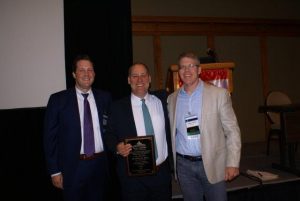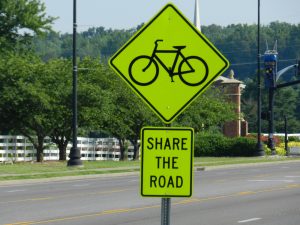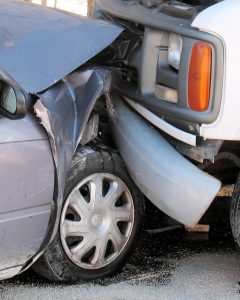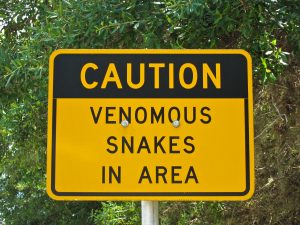By now you have probably seen the video of the driver of a Volvo (Mr. Neely) hitting a bicyclist (Tyler Noe) on the Natchez Trace Parkway. If you have not, just Google “bicycle accident and Natchez trace” and you will find lots of sites with video of the accident. In short, Mr. Noe was hit by a black Volvo hits that simply keeps going after the very scary impact. Mr. Neely, the driver of the black Volvo, has since been charged with felony reckless endangerment, leaving the scene of an accident, failure to immediately notify of an accident and failure to render aid. As a firm that has handled a lot of accidents involving bicyclists, cars, trucks, motorcycles, etc., this case helps demonstrate 4 important points about injury accidents. Continue reading
The Measure of Success


The Law Offices of John Day, P.C. could not be more proud of our very own Brandon Bass. Brandon was recently recognized by the Tennessee Trial Lawyers Association as “Outstanding Trial Lawyer of the Year”. This is a tremendous accomplishment and one that Brandon richly deserves for his work on behalf of injury victims and their families. Brandon (along with John Day, Joy Day, Laura Baker and Liz Sitzgreaves) was also recently named a Mid-South Super Lawyer again this year. Only 5% of the lawyers in the Mid-South receive this recognition.
And while we love receiving these types of awards, we know that awards are not the true measure of our success. Instead, Brandon would be the first to tell you that the true measure of our success is a fully satisfied client. A client who has been successfully shepherded through the litigation process. A client that has had their questions answered and concerns addressed. A client who receives prompt responses to phone calls and emails. A client who feels like their lawyer truly understands their situation and sincerely wants to help them. A client who is so happy with the legal services we provided that they refer a friend or family member who needs help after an accident. A client who will take the time to write a Google or Facebook review or just send us a nice thank you note or give us a call simply to express their gratitude for our work on their behalf. A client who speaks highly about their lawyer to others. And of course, a client who receives the compensation their case deserves.
This is the type of success and recognition we strive for every day. Of course, the happy irony is that Brandon (and our other lawyer’s) conscientious commitment to our client’s satisfaction is what produces the results that win awards. Pretty simple really: hard work and talent usually get recognized in the form of awards. Although awards can help injury victims decide who to hire to help them when they need it, awards are not the only consideration. There are lots of factors you should keep in mind when deciding which lawyer to help you with your injury case.
Summer Camp: Free Advice From Injury Lawyers
In a few weeks, our daughter Kate returns for her second year of overnight camp in North Carolina. She is beyond excited as she had a great time last year, and we are not nearly as nervous as parents this time around. Parents worry about lots of things when their kids head off to camp:
- Will they make friends?
- Will the camp serve food that my kid will actually eat?
- Will they get homesick?
- Will they remember to brush their teeth?
Of course, because both of Kate’s parents are injury lawyers, we can’t help but also worry about safety. A lot. So what are some questions you should be asking before you sign your kid up for a day or overnight camp? Continue reading
Drugging and Driving
Here is a statistic that will make you uneasy: more fatal accidents are now being caused by drugged driving than drunk driving. Here are 15 facts you may not know about drugged driving:
Hit and Run Accidents: Do You Know What To Do?
According to a recent report in The Tennessean, Franklin police need help locating a driver who caused a deadly motorcycle accident last week on McEwen drive. According to witnesses, an unidentified Nolensville woman, age 50, changed lanes and knocked the motorcycle into a curb. The motorcyclist, who was thrown from his bike, was severely injured and later died at the scene. If you or a family member was involved in an accident with an unidentified driver who does not stop, you can still recover money for your losses if you have the right insurance and know what to do. Continue reading
Beware of the “Lawyers”
Recently, I have seen two instances of people posing as lawyers and engaging in unscrupulous behavior. Tennessee Attorney General Herbert Slatery is now involved in one of the cases, and criminal charges are pending against the other. So what exactly are these posers alleged to have done and what can you do to protect yourself? Continue reading
Electrical Shock Drowning and How to Prevent It
It is that time again. The boat and jet skis are in the water. Spring rains are bringing the lake level up to summer pool. With the warmer temperatures, the water in the lake will soon be ready for swimming. Our family will head down to Tim’s Ford Lake every chance we get. For our family and probably most others, the first ones in the water are the kids. To keep them and everyone else safe this summer from electrical shock drowning, refresh yourself on these life-saving safety tips and teach your children the ones appropriate for them: Continue reading
Dogs: Man’s Best Friend (Usually)
Roughly 44% of all U.S. households have a dog. Ours has a tri-color King Charles Cavalier named Lincoln (pictured above). Lincoln and most other dogs are wonderful companions, protectors, and exercise buddies, but when they want to dogs can inflict a lot of damage primarily due to their bite pressure. So just how strong is a dog’s bite? Continue reading
Cuba: Coffee, Cigars, Che and Good Lawyers
Since President Obama began trying to normalize relations with Cuba, my wife and I have wanted to travel to the country, but the United States still bans general tourism to Cuba. Visitors must fall within 12 officially authorized categories. So we were thrilled when the Nashville Bar Association organized a People to People educational trip to Havana from April 1st to April 5th. During our trip, we enjoyed a performance by an incredibly talented youth orchestra, heard lectures by some very bright professors on Cuba-US relations and the Cuban economy, toured Hemingway’s home, went to Fusterlandia, visited a Cuban art museum, had a great walking tour of Old Havana and much more. Here are some tidbits and one very important take-away from our trip: Continue reading
Breaking News: Litigation is Expensive
Last week, Slate reporter Emma Copley Eisenberg did a piece on the “astronomical price” charged by court reporters for trial transcripts. Eisenberg was stunned by the “outrageous fees” charged by court reporters when she wanted to investigate a case involving a farmer who had been convicted of a double homicide. When Eisenberg went to the courthouse to obtain a copy of the criminal trial transcript, she learned it would cost her $2400.00 to obtain a copy of the transcript. (Notably, it cost the farmer nearly $7,000 for the original transcript.) Eisenberg got a quick lesson on something trial lawyers have long known: litigation is expensive. Why is that?
Continue reading













